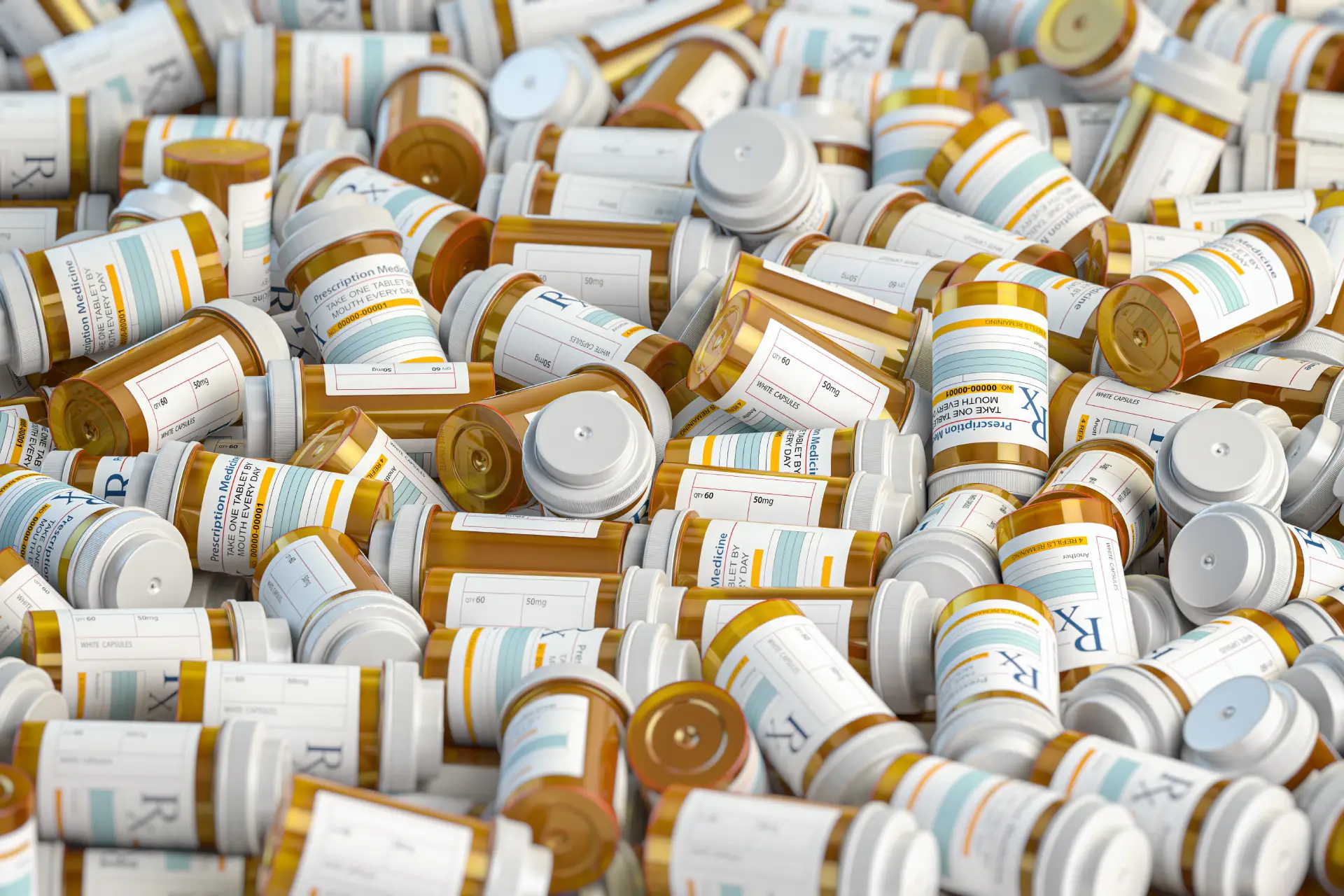Prescription Drug Addiction Treatment in Long Island
Comprehensive prescription drug addiction care on Long Island that combines medical detox, medication assisted treatment, therapy, peer support, and aftercare, with referrals to trusted programs matched to your needs.
Covered by most insurance plans
Available to help you 24/7
Table of Contents
Prescription drug abuse is a serious epidemic on Long Island and across New York, with the Department of Health reporting thousands of life-threatening overdose cases that required hospitalization. If you or a loved one is struggling with this type of addiction, it is important to understand how dependence develops, how to identify it, and the treatment programs available to overcome it.

What Prescription Drugs Have the Highest Potential for Abuse?
While many prescription drugs help manage serious health conditions, some pose a high risk of addiction when misused. Here are the main categories:
Opioids
Opioids are powerful painkillers derived from the opium poppy plant or created synthetically. They are prescribed for moderate to severe pain but carry high risks of dependency. Common opioids include oxycodone (OxyContin, Percocet), hydrocodone (Vicodin), and fentanyl, which is linked to more than 20% of opioid-related overdose deaths.
Stimulants
Stimulants are used to treat ADHD and narcolepsy by increasing focus and alertness. However, they are frequently abused for performance enhancement. Examples include methylphenidate (Ritalin, Concerta) and amphetamine (Adderall).
Benzodiazepines
Known as “Benzos,” these sedatives are prescribed for anxiety and insomnia but carry a very high risk of addiction, even at prescribed doses. Examples include alprazolam (Xanax), diazepam (Valium), and lorazepam (Ativan).
Image suggestion: A divided image showing three categories of drugs: painkillers, ADHD pills, and anxiety medications.
How Does Prescription Drug Addiction Develop?
Prescription drug addiction develops when a person takes more of a medication than prescribed or continues using it longer than intended. Over time, the body builds a tolerance, requiring higher doses to feel the same effects. This cycle leads to dependence, withdrawal symptoms, and eventually compulsive drug-seeking behavior.
Main Causes of Prescription Drug Addiction
- Individual Factors: Family history of addiction, mental health disorders, early exposure to addictive medications.
- Social Factors: Easy access to medications, lack of awareness, stress from work or school, chronic pain, or sleep disorders.
Image suggestion: A young adult sitting at a desk with scattered pills and textbooks, symbolizing academic stress and misuse.
Signs and Symptoms of Prescription Drug Abuse
Behavioral Changes
- Taking larger doses than prescribed
- Doctor shopping or forging prescriptions
- Buying drugs illegally or stealing medications
- Isolation and neglect of responsibilities
- Changing methods of use (snorting, injecting)
Physical and Psychological Symptoms
- Withdrawal symptoms when reducing doses
- Disturbed sleep patterns
- Mood swings, irritability, or memory issues
- Nausea, vomiting, or constipation
- Poor concentration and coordination
Image suggestion: A concerned family watching a loved one isolate themselves in a dimly lit room.
Treatment Approaches for Prescription Drug Addiction
Medical Detoxification
The first stage of treatment, where patients receive 24/7 supervision in an inpatient or residential facility. Medication-assisted treatment may be used with FDA-approved drugs like methadone, buprenorphine, or naltrexone to ease withdrawal and cravings.
Individual Therapy
Focuses on identifying the root causes of addiction and building coping strategies. Cognitive Behavioral Therapy (CBT) is widely used to reshape harmful thought patterns.
Group Therapy
Support groups and 12-step programs help break the isolation of addiction and provide accountability, encouragement, and relapse prevention tools.
Post-Recovery Care
Includes ongoing lifestyle support such as exercise, mindfulness practices, yoga, meditation, and continued therapy to maintain sobriety long-term.
Image suggestion: A support group sitting in a circle, with one individual sharing while others listen attentively.
Finding Help with Prescription Drug Addiction on Long Island
Recovery is challenging and achievable. The right match between clinical needs, level of care, and personal preferences makes a real difference. Long Island Addiction Resources connects you with vetted programs across levels of care such as medical detox, residential treatment, partial hospitalization, intensive outpatient, standard outpatient, and recovery housing. We are a connector and guide, not a treatment facility, and we prioritize programs that provide person centered, evidence based care.
Image suggestion: A hopeful sunrise over the Long Island shoreline, symbolizing new beginnings and recovery.
Start Prescription Drug Addiction Treatment on Long Island Today
If you or a loved one are ready to end your alcohol and drug use, there are many recovery options available near you in Long Island
Are you ready to take back control over your life?
Making the decision to seek help is one of the hardest and bravest steps you can take. We know that the recovery process is not always easy—there may be challenges along the way—but every step forward brings you closer to a life free from the weight of addiction.
Find treatment options covered by insurance















Let today be
your Day 1
We'll get on a call, assess your health history, and verify your insurance. Today is Day 1. We can't wait to celebrate Day 1000 with you!
Fill out this simple form and we’ll call you right back.
Frequently Asked Questions
We'll get on a call, assess your health history, and verify your insurance. Today is Day 1. We can't wait to celebrate Day 1000 with you!
How is inhalant addiction treated?
Treatment begins with medical stabilization, monitoring breathing and heart function, and providing nutritional support. Therapy and behavioral interventions follow once the patient is stabilized.
What therapies are effective for inhalant use disorder?
Evidence-based options include Cognitive Behavioral Therapy (CBT), Motivational Interviewing, Family Therapy, and Contingency Management.
Are there peer support groups for inhalant recovery?
Yes. Peer support groups and community-based recovery programs provide encouragement, accountability, and a supportive network for individuals in recovery.
What are the short-term health risks of inhalant misuse?
Risks include slurred speech, nausea, blurred vision, irregular heart rhythms, and impaired coordination. Even a single use can be fatal.
What are the long-term effects of inhalant abuse?
Chronic misuse can lead to liver and kidney damage, hearing loss, seizures, permanent brain injury, cognitive decline, and coma.
